
The use of chemotherapy trended toward improved recurrence-free intervals in older patients with high-risk tumors as determined via the MammaPrint assay.

Your AI-Trained Oncology Knowledge Connection!


The use of chemotherapy trended toward improved recurrence-free intervals in older patients with high-risk tumors as determined via the MammaPrint assay.

Use of a pharmacist-directed resource appears to improve provider confidence and adverse effect monitoring for patients undergoing infusion therapy.

Reshma L. Mahtani, DO, describes how updates from the DESTINY-Breast09, ASCENT-04, and VERITAC-2 trials may shift practices in the breast cancer field.

Panelists discuss how molecular testing strategies prioritize BRCA and HRD status at diagnosis while incorporating folate receptor alpha and other biomarkers in the recurrent setting to guide treatment decisions and clinical trial eligibility.

Panelists discuss how treatment approaches differ between platinum-sensitive and platinum-resistant ovarian cancer patients, emphasizing the use of platinum doublets and maintenance therapies in sensitive cases versus the limited options historically available for resistant cases.
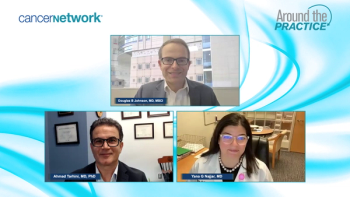
Panelists discuss how the dose-response relationship is more pronounced with ipilimumab than with PD-1 inhibitors, explaining why toxicity increases with higher ipilimumab doses while efficacy may not proportionally improve with higher PD-1 inhibitor doses.

Panelists discuss how the toxicity profiles of immunotherapy regimens are fundamentally similar in type but differ significantly in frequency and severity, with ipilimumab-containing regimens causing higher rates of serious adverse events, particularly colitis and hypophysitis.
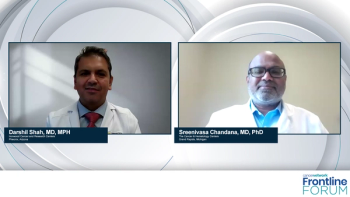
Panelists discuss how dose reductions in the NAPOLI-3 trial paradoxically led to improved survival outcomes (12.6 months for nanoliposomal irinotecan reductions and 13.5 months for oxaliplatin reductions vs shorter survival with full doses), supporting their clinical approach of maintaining patients on tolerable doses for longer treatment duration rather than pursuing maximum dose intensity.

Panelists discuss how UGT1A1 mutations may predict increased diarrhea risk in patients receiving NALIRIFOX, with genetic testing potentially valuable for identifying patients who need more aggressive supportive care or dose modifications, particularly those with borderline performance status.

Panelists discuss how real-world retrospective data from the Flatiron Health Database showed median overall survival of approximately 9 months for FOLFIRINOX-treated patients, which appears numerically lower than NALIRIFOX results, though these findings require cautious interpretation due to the nonrandomized nature of the comparison.

Panelists discuss how adverse event profiles differ between regimens—with FOLFIRINOX causing high rates of neutropenia and neuropathy and NALIRIFOX showing lower neuropathy rates but higher grade 3 diarrhea—making patient-specific factors crucial for treatment selection and emphasizing the importance of dose adjustments and patient education.
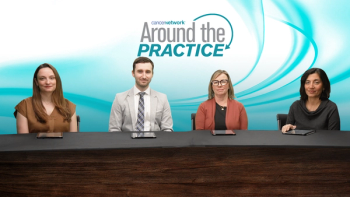
Panelists discuss how the assessment and management of immune effector cell–associated neurotoxicity syndrome involves grading symptoms from mild to life-threatening, emphasizing the need for prompt recognition and rapid intervention to prevent progression and minimize long-term neurological damage.

Panelists discuss how recognizing and grading cytokine release syndrome (CRS) based on symptoms ranging from mild flulike effects to life-threatening conditions is essential for timely intervention, with early detection being key to managing CRS effectively and preventing progression to severe stages.
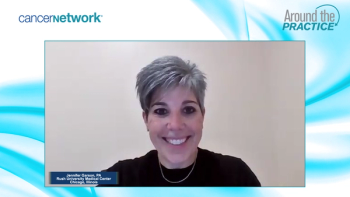
A panelist discusses how tazemetostat offers a convenient, mutation-independent oral option for third-line follicular lymphoma treatment, balancing efficacy and tolerability while addressing patient lifestyle and financial considerations in an era of advanced therapies like CAR T-cell and bispecific antibodies.

A panelist discusses how advances in follicular lymphoma treatments have expanded options beyond third-line therapy, emphasizing individualized, multidisciplinary care that integrates medical, psychosocial, and logistical support to address the complex needs of often older patients managing an incurable disease.

A panelist discusses how treatment decisions for relapsed/refractory follicular lymphoma (R/R FL) hinge on prior therapies, balancing goals between remission and disease control, while considering patient factors like age, access, and preferences among options such as CAR T-cell therapy, bispecific antibodies, and oral regimens.
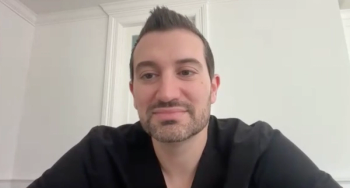
Scalp cooling may enhance patients’ quality of life when managing hair loss associated with cancer treatment.

Panelists discuss how the NAPOLI-3 trial led to FDA approval of NALIRIFOX after demonstrating superior median overall survival (11.1 months) and progression-free survival (7.4 months) compared with gemcitabine/nab-paclitaxel, with key differences from the older PRODIGE 4 study including a lower oxaliplatin dose that may reduce adverse effects.

Panelists discuss how the current first-line treatment landscape for metastatic pancreatic adenocarcinoma includes NCCN-recommended regimens like FOLFIRINOX, gemcitabine plus nab-paclitaxel, and newest addition NALIRIFOX, with treatment selection guided by toxicity profiles, patient-specific factors, and the importance of germline testing.

Diverse dermatologic AEs, such as hair and nail toxicities, can be associated with various cancer treatments.

Stage IV lung cancer may be curable based on the success of the DREAM Program, according to thoracic surgeon, Ankit Bharat, MBBS,

Ankit Bharat, MBBS, a thoracic surgeon, discussed potential treatment-emergent adverse effects or complications as well as strategies for managing them.
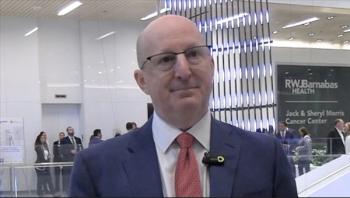
The Jack & Sheryl Morris Cancer Center offers “state-of-the-art” surgical suites and advanced radiation technology, says Andrew M. Evens, DO, MBA, MSc.

Thoracic surgeon Ankit Bharat, MBBS, discussed surgical strategies among patients with advanced lung cancer diagnoses based on staging.
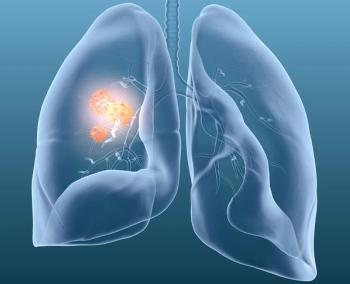
In a CancerNetwork® YouTube video, Cornelia Tischmacher, a mother of twins from Germany, outlined her receipt of double lung transplantation.

Panelists discuss how 2 key clinical trials, Checkmate 067 and RELATIVITY-047, established the efficacy of different immunotherapy combinations while highlighting the significant difference in toxicity profiles between ipilimumab plus nivolumab (60% grade 3/4 toxicity) versus relatlimab plus nivolumab (19% grade 3/4 toxicity).

Panelists discuss how monotherapy may still be appropriate for certain patient populations including those with desmoplastic melanoma, solid organ transplants, severe autoimmune disease, and older patients where the toxicity risk of combination therapy may outweigh benefits.

Kit Yu Lu, MD, discussed the implications of the TROPiCS-02 and DESTINY-Breast06 trial data for sequencing ADCs in HR+/HER2– breast cancer.

Panelists discuss how the assessment and management of immune effector cell–associated neurotoxicity syndrome involves grading symptoms from mild to life-threatening, emphasizing the need for prompt recognition and rapid intervention to prevent progression and minimize long-term neurological damage.

Panelists discuss how education materials for tarlatamab include detailed treatment overviews, potential adverse effects, and monitoring requirements, while emphasizing the importance of ensuring that patients and caregivers fully understand the information and can recognize early signs of adverse reactions.